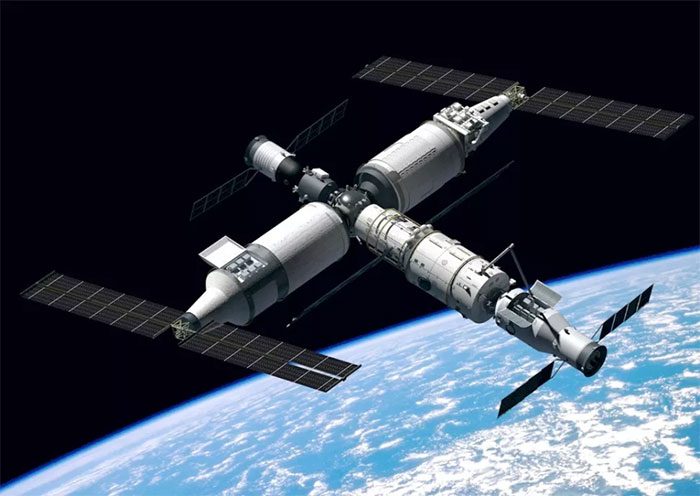China is Encouraging Commercial Space Travel. Accordingly, the Tiangong space station may open its doors to space tourists within the next 10 years.
Yang Liwei, who made history in 2003 as China’s first astronaut in space, told the media that untrained individuals could soon visit the Tiangong space station.

Illustration of China’s space station orbiting Earth.
“This is not a matter of technology but of demand. And it could become a reality within a decade as long as there is such demand,” Yang said when asked if the public could visit the Tiangong station.
Mr. Yang responded as a member of the Chinese People’s Political Consultative Conference (CPPCC), part of the annual political sessions currently taking place in Beijing.
Chu Jianping, the chief designer of China’s crewed space program, stated that the Shenzhou spacecraft could be utilized for space tourism. These remarks indicate that China is looking to establish a space tourism market.
However, China needs to complete the three-module T-shaped space station and fully operationalize it. China plans to carry out six missions this year to complete the Tiangong space station.
The missions include launching two new modules, two cargo supply ships, and two crewed spacecraft, Shenzhou 14 and Shenzhou 15. Each spacecraft will carry three astronauts, meaning there will be six astronauts working on the space station simultaneously for a short period.
Shenzhou spacecraft, typically launched from the Jiuquan Satellite Launch Center in the Gobi Desert using a Long March 2F rocket, will not be the only option for transporting tourists into space. China is researching a reusable rocket for crewed space flights. This rocket has the capability to launch a larger new crewed spacecraft and can be partially reused. This new approach means that more people can fly to space at the same time.
While the Shenzhou spacecraft can only carry three astronauts, the new vehicle is capable of carrying 6-7 people, according to Huang Kewu, an expert at the China Aerospace Science and Technology Corporation.
Several other companies are also developing in the space tourism sector. CAS Space, a company under the Chinese Academy of Sciences (CAS), aims to offer space flights to tourists as early as 2025.
Meanwhile, the aerospace company Space Transportation is developing a “winged rocket” for space tourism. This company aims to conduct its first suborbital flight in 2025, with orbital flights expected around 2030.
Wu Ji, a researcher at the National Space Science Center under CAS, hopes that Chinese companies can compete in the international space tourism market.
“Commercial programs can help reduce costs and improve the efficiency of space activities. This will also benefit traditional players in this field,” Wu said.





















































